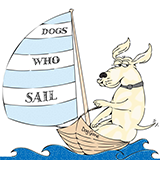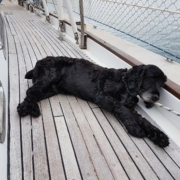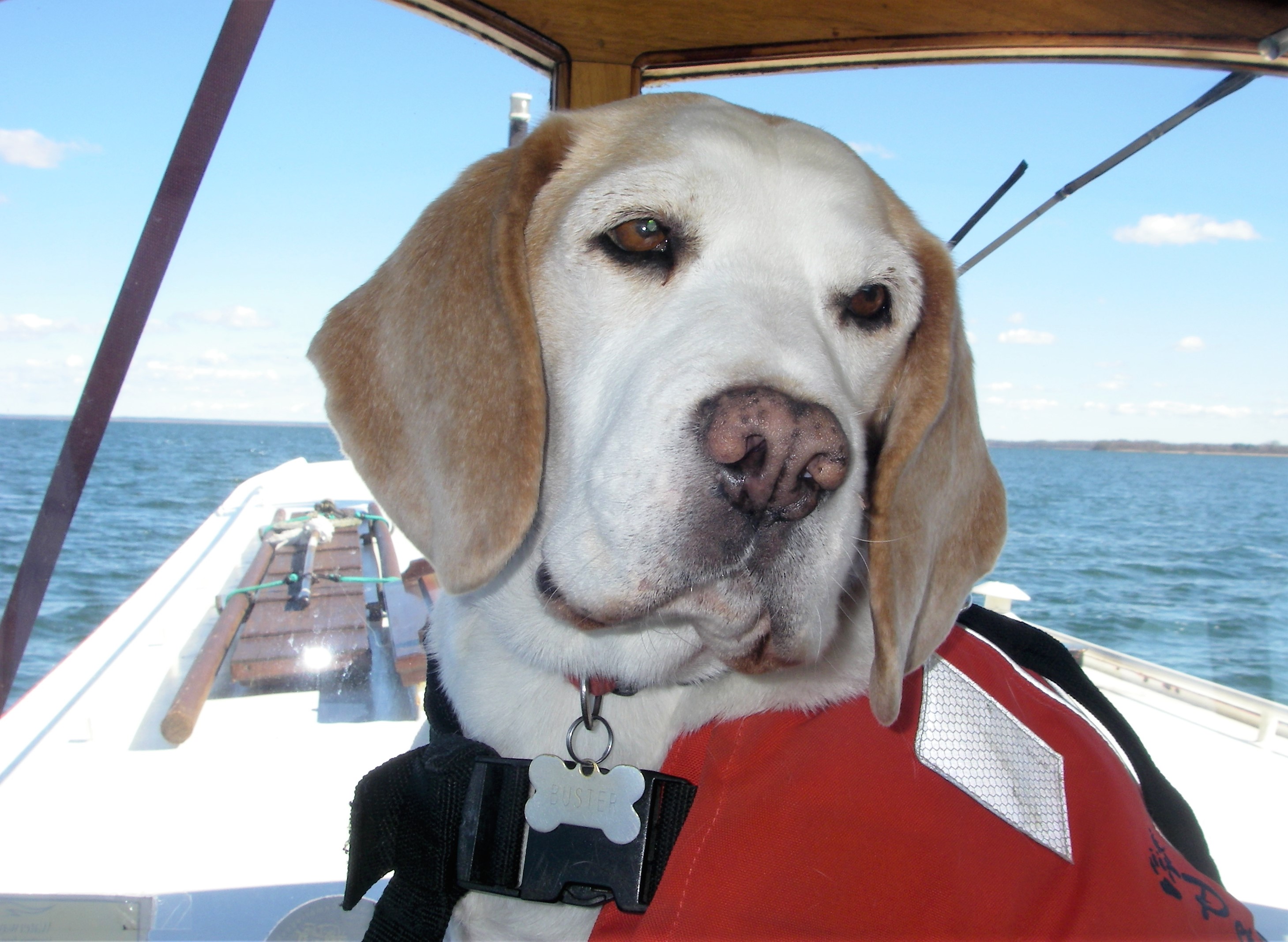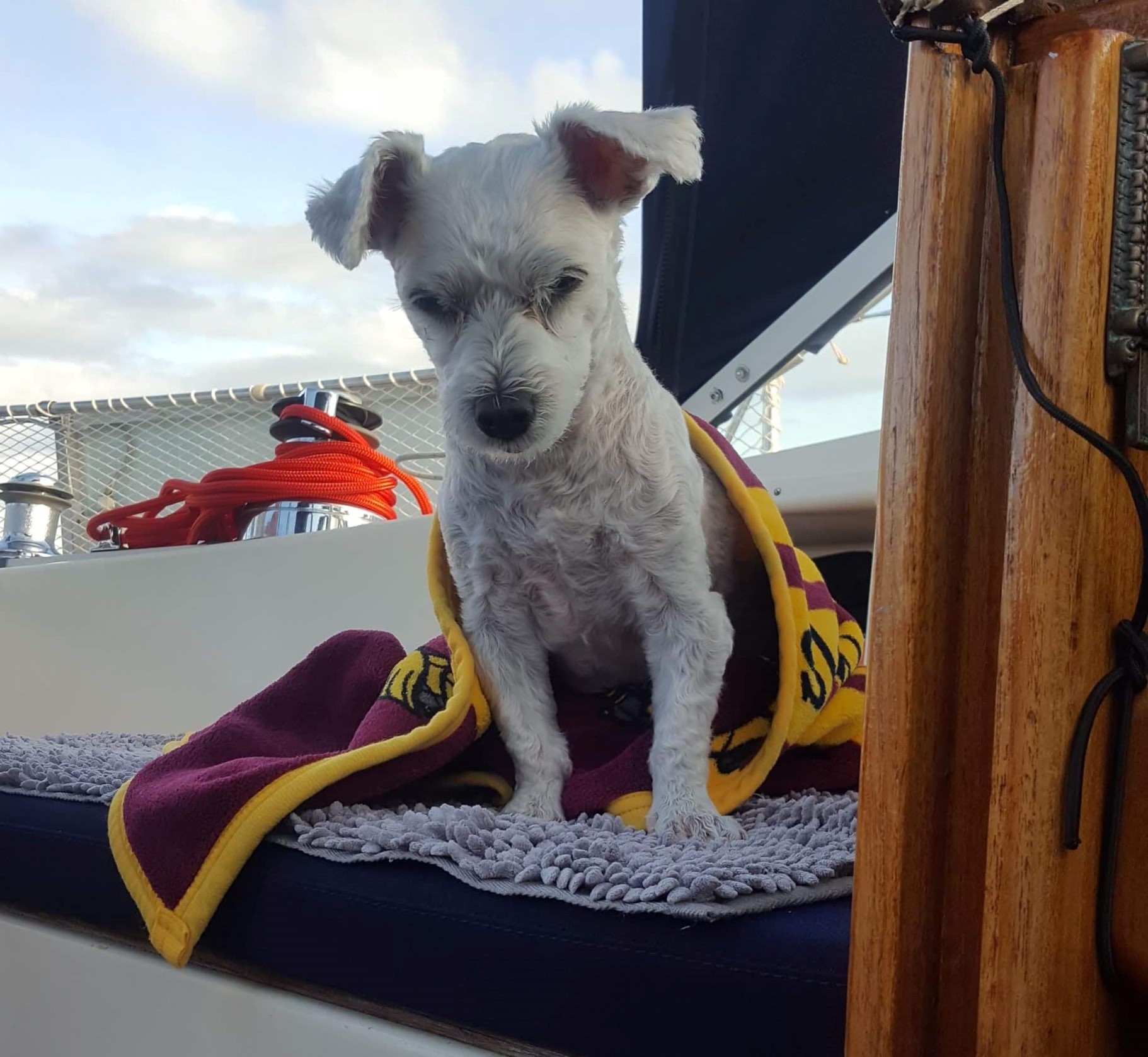Most sailors with furry four-legged crew members who join Dogs Who Sail will often request advice about dog lifejackets.
Before introducing Maxy and Mel to the boat, I invested in lifejackets for them.
Looking back I cringe at the first lifejackets I bought them. My intention was with the greatest love but my choice was completely misinformed.
The jacket was called by all the right names and had a reputable brand associated with sailing but no thoughtful design to save my dogs life.
Like many of you reading this article for your research, I regarded Maxy and Mel as my fur-kids. If anything happened to either of them, especially from my carelessness, I would live with the heavy burden of regret to my last day. They deserve the same safety measures as I apply to myself, our crew and guests.
1. Quality
In today’s current market for dog lifejackets I never look beyond Ruffwear. After trialing a number of lifejackets on our sailing Cocker Spaniels Maxy and Mel, Ruffwear ticked all of the boxes. These fabulous jackets are designed for the adventure dog, just like your boat dog.
Ruffwear price tags may be a little higher than most dog lifejackets but I do believe in this case, you get what you pay for. This lifejacket acts as a form of insurance, protecting your beloved dog.
The purpose of the dog lifejacket is quite simply to keep your dog from drowning.
Read on to learn about the features of a good dog lifejacket.
2. Design
The lifejacket you choose for your dog should allow her to swim naturally. The last thing you want, is for your dog to be panicking in the water, struggling to find their natural form in a cumbersome jacket.
If your dog is not supported properly in the water, it makes it difficult for them to swim, and they are likely to tire more quickly adding risk to their safety.
A good quality design will consider where the foam panels are best placed in the lifejacket to keep your dog afloat. The company will also take the time to describe this feature in the product specifications.
A well-designed lifejacket will have been tried and tested until the designers know the perfect placement of the foam panels.
A slab of foam strapped to your dog’s back is not sufficient. It may keep them afloat for a short time but is an unreliable safety precaution over longer periods and will cause your dog to drown as you will see as you read on.

3. Perfect Fit
It is important to make sure that the lifejacket is a snug fit.
When your dog is in the water or being pulled to safety you don’t want them falling out of their lifejacket.
A snug fit is also important because the dog will also be wearing the device when they are dry, a well-fitted device will help them to move naturally.
4. Tried & Tested
Reputable brands take pride in their quality control and will test their designs in real life adventure situations, guaranteeing the product based on their qualitative analysis.
By checking the website of the supplier, you can ascertain if the lifejacket you choose has been manufactured having been tested on an array of different dogs, swimming in various waterways and hiking different terrains.
5. Chin Rest
This feature can be the difference between a life and death situation.
If your dog has been swimming for an extended period of time or is a weak swimmer, as they become tired, an unsupported head will flop forward into the water and your dog will ingest volumes of water into their lungs causing them to drown.
A strategically positioned chin rest will be padded with a closed cell foam panel that the dogs chin will naturally rest upon.
The closed-cell foam, which is more resistant to water penetration than open-cell foam, keeps the dog’s mouth above the waterline allowing them to breathe, offering head and neck support while minimising the amount of water that goes into the dog’s mouth and lungs.
This is one feature I recommend you keep at the top of your Wish List when looking for a lifejacket for your best furry four-legged friend.

6. Strong Handle
We used Maxy and Mel’s lifejackets to help them into and out of the dinghy from the Mothership.
It was therefore vitally important that the handle was strong and wouldn’t tear the jacket under load.
If you have to rescue your dog from the ocean, keep in mind that your waterlogged dog will be much heavier than when they are dry.
You want to have every confidence that the handle is easy to grab and will manage the weight of your soggy doggie.
Important Note
When you are inspecting a dog lifejacket, look at the seams around the handle for reinforced stitching and where possible, try the jacket on your dog.
With the lifejacket securely in place, lift them up like a suitcase. You will get a feel for the handle immediately. If the handle is cutting into your hands or you can see the stitching opening, even if slightly, this is not a high-quality garment and not good enough for your furry crew member.
Ditch it and move on immediately.
7. Tummy Support
There are several doggie lifejackets on the market where the foam finishes either on top of the dogs back or slightly down their sides, leaving their belly exposed to the nylon straps that keep it in place.
As described in the last point, the weight of your dog is going to increase in a rescue situation and when you are pulling him out of the water you don’t want those nylon straps cutting into your dog’s tummy, especially if they are already having difficulty breathing.
As the lifejacket is also worn out of the water, keep an eye on nylon straps rubbing under the armpits and belly which can lead to chafing and matting.
A high quality thoughtfully designed dog lifejacket will continue from the back, down the side of the dog’s ribs to join under the belly.
8. Water Compatible Material
Check the manufacturers specifications to learn about the type of material and foam used within the lifejacket.
The jacket should be as weightless and breathable as possible.
A heavy fabric, and foam that retains water like a sponge, adds to the weight of a wet pooch and will drag your dog down into the water, tiring her out faster.
Your safest bet is nylon fabrics and closed-cell foam panels.
I was once shown a lifejacket that someone’s friend made for their dog…from denim. One of the heaviest fabrics on the market. Cute but potentially lethal.
This is not the doggie wear to make fashion statements with. No sparkly diamantes and shiny silver studs, this is 100% practical my doggie loving friends.
9. Sturdy Clips
These are the clips that secure the lifejacket in place on your dog’s body.
Ensure the clips will hold the weight of your dog when under full load, by checking that they clip securely in place. This can be heard by a nice crisp snap. A faulty or low grade clip will feel forced and close with a muffled snap sound.
Bypass the smaller flimsy clips. You want the reassurance of a solid, strong fastener.
10. Safety Tab
This is a small loop style tab where you can attach a safety light and a personal GPS device.
These added extras, I highly recommend. Most safety devices are activated as soon as the dog falls into the water.
The tabs are sown into the lifejacket in a position that is out of the way of the dog’s physical mobility. The light and tracker are easily seen by rescuers.
For The Doggie Bag
As you can see, there are a few considerations to ensure your dog is safe on your boat.
Every characteristic I have mentioned is valuable and if one is missing, I don’t recommend to buy that lifejacket.
My dogs are my family and I will happily be jibed about being an overprotective doggie mum. It’s important to me to have every confidence that my fur babies are as safe as can be.
Fair winds and an abundance of doggie love.,
Tanya











Wonderful article and I appreciate your work.
King regards,
Mead Raahauge